Harmonie ambulance Tours (37)
En savoir plus sur notre agence

Informations pratiques
Harmonie ambulance Tours (37) 16 Rue Joseph Cugnot, 37300 Joué-lès-Tours, France
Contact Tél. 02 47 05 34 99 [email protected] Formulaire de contact
Chargement en cours
Nous rejoindre
Tél.: 02 47 05 34 99
Fax: 02 47 61 78 64
Email: [email protected]
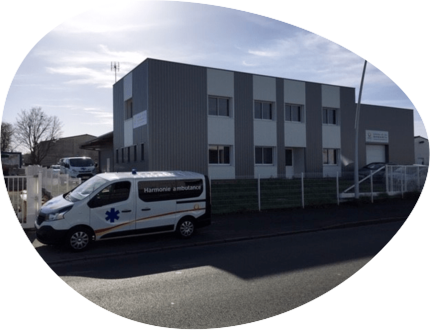
Réseaux sociaux
- Recrutement Les formations Offres d'emploi
- Espace adhérent
- Une question ?
- Accessibilité Zoom Défaut Accentué Contraste Défaut Accentué

- Direction médicale
- Véhicule Sanitaire Léger
- Garde préfectorale
- Appels Centre 15
- Prestations SMUR
- Assistance et rapatriements
- Couverture sanitaire d'évènements
- Transport de produits biologiques
- Conseils et flux logistiques
- Remboursement
- Prise en charge
- Le siège national
- Mon centre ambulancier
- Devenir adhérent
- Trouver un centre JUSSIEU
- Transports sanitaires Ambulance Véhicule Sanitaire Léger Taxi
- Urgence prehospitalière Garde préfectorale Appels Centre 15
- Ambulance Remboursement Tarifs Prise en charge
- VSL Remboursement Tarifs Prise en charge
- Taxi conventionné Remboursement Tarifs Prise en charge
- Les formations
- Offres d'emploi
JUSSIEU secours TOURS

JUSSIEU secours Tours est basé en Indre-et-Loire et dispose de 7 implantations dans le département : Tours, Saint-Avertin, Monnaie, Château-Renault, Amboise, Artannes-sur-Indre, Chinon.
Ce solide maillage nous permet d’intervenir rapidement pour tous vos besoins en transport sanitaire et notamment pour les urgences.
Notre spécialité est le transport sanitaire de malades assis ou couchés depuis 1959.
Parce que votre santé nous est précieuse et que nous souhaitons toujours répondre davantage à vos attentes et vous satisfaire au mieux, nous intervenons 24h/24 et 7j/7.
Depuis 2005, nous adhérons au réseau JUSSIEU secours qui est une structure nationale déclinée par centres ambulanciers sur l’ensemble du territoire, répondant aux besoins d’homogénéisation qualitative, visuelle et structurelle de la prestation d'ambulances par la standardisation de l’ensemble de la prestation.
Preuve supplémentaire de notre professionnalisme, nous disposons également de la certification ISO 9001 version 2015 depuis Juillet 2016.
Pour toute demande d’intervention, que ce soit en ambulance ou en VSL , ou pour toute question relative à un déplacement, nous sommes à votre disposition au 02 47 27 24 24. N’hésitez pas à nous contacter !
Nos VSL accompagnent les patients autonomes ou nécessitant un accompagnement pour des soins, des diagnostics, des trajets d’entrée ou de sortie d’hospitalisation.
Parce que votre sécurité est notre priorité, tous nos ambulanciers et auxiliaires ambulanciers sont habilités à pratiquer les gestes de premiers secours en cas de besoin. Réactivité, sécurité et accompagnement sont nos mots d’ordre sur chacune de nos interventions.
Vous habitez Tours Métropole, Amboise, Saint-Avertin, Bléré, Château-Renault, Artannes-sur-Indre, Chinon ou encore Monnaie ? Contactez-nous pour tous vos besoins de transport sanitaire. Notre importante présence en Indre-et-Loire nous permet d’intervenir rapidement n’importe où dans le département.
Pour le transport de personnes en taxi, n’hésitez pas à faire appel à nos chauffeurs qui sauront se montrer prévenants à votre égard.
Notre priorité est de vous satisfaire pleinement, que ce soit pour : vos transports privés ou vos transports assis professionnalisés (TAP), vos transferts vers un hôpital, une gare ou un aéroport.
Nos nombreuses communes de stationnement (Amboise, Montlouis-sur-Loire, Saint-Branchs, Monnaie, Château-Renault, Chançay, Rouziers de Touraine, Neuillé-Pont-Pierre) nous permettent de couvrir une grande partie du département de l’Indre-et-Loire et surtout d’être rapidement sur les lieux.
Ou par téléphone
2 boulevard tonnelle, 37000 Tours
Afficher le numéro
Plan d'accès pour l'ambulance Atsu37
Garantissez l'exactitude de vos informations médicales. Pensez à mettre à jour vos coordonnées et précisez votre spécialité.
mettre à jour ma fiche
Consultez les ambulances à proximité
Ambulances tourangelles
Ambulances Tours
Ambulances central parc
ambulance Tours
Ambulances 37
Central ambulances
Christelle ambulance
ambulance Saint-Pierre-des-Corps
Didier ambulance
Ambulances Joué-lès-Tours
Ambulances bruneau
Ambulances Saint-Cyr-sur-Loire
Ambulance accus
Ambulances barthes
Ambulances Saint-Avertin
Ambulances Jussieu Secours
Ambulances breton françois
ambulance Saint-Avertin
Ballan ambulance
Ambulances Ballan-Miré
Ambulances La Ville-aux-Dames
Ambulances 24 24 atsu 37
Ambulances Chambray-lès-Tours
Ambulance taxi vsl marteau
Ambulances Luynes
Bip bip ambulance
Ambulances Monts
ambulance Montlouis-sur-Loire
Esvres ambulances
Ambulances Esvres
Ambulance blondeau
Ambulances Veigné
FDNY opens new EMS station
After 2010 hospital closure, city quickly established this temporary ems facility, which will house 9 units, staff 21 ambulance tours daily.

Photo FDNY FDNY members cut the ribbon, officially opening EMS Station 7 in Manhattan.
NEW YORK — Tucked under the High Line is a new EMS station that will help keep Manhattan residents safe.
FDNY members cut a ceremonial ribbon opening EMS Station 7 on Nov. 15, which will serve the communities of Manhattan’s west side.
“Our goal is to continue our commitment to this dynamic neighborhood,” said Fire Commissioner Salvatore Cassano.
Chief of Department Edward Kilduff added, “This was truly a team effort and everyone who took part should be proud.”
Following the closure of St Vincent’s Hospital in April 2010, the FDNY immediately increased the number of units and tours in the area to replace those hospital units lost.
FDNY worked with the Mayor’s Office of Management and Budget and the Department of Citywide Administrative Services to quickly establish this temporary EMS facility in the Midtown West area of Manhattan to improve FDNY EMS response.
“You are going to provide a vital service to this community,” Chief of EMS Abdo Nahmod said.
EMS Station 7 is a 3,656 square foot facility located under the Highline Park. This new station will house nine units, and will staff 21 ambulance tours each day. The station contains supply areas for advanced and basic life support, a vehicle supply room, oxygen storage area, and a decontamination bay.
“This neighborhood has been so gracious,” said Capt. James Foley, the commanding officer of Station 7. “We know we’ll have a long, happy relationship with everyone in the area.”
Republished with permission from FDNY
Virtual tours & information
Ambulance tour.
We offer virtual tours and instruction for your classroom or organization
Free community education is available virtually! We want to help you create a team of people ready to respond to life’s emergencies. We are happy to offer virtual instruction for the following:
- Hands-Only CPR and AED Training
- Introduction to Emergencies and Calling 9-1-1 for kids
- Basic First Aid
- First Aid for Boy Scouts and Girl Scouts
- Meet a First Responder
- Stop the Bleed Instruction
- Virtual CPR/AED drill Assistance for MI Heart Safe Schools
Contact us to set up virtual training for your class or group:
Nicole Balensiefer, EMT [email protected] 734-477-6218
Personal Protective equipment
Contact emergent health partners.
- Ann Arbor Dispatch Phone: 734-994-4111
- Battle Creek Dispatch Phone: 269-964-6400
- Phone: 1-800-507-7847
- Email: [email protected]
- Email: [email protected]
- Email: [email protected]
- Address: 1200 State Circle, Ann Arbor, MI 48108
- Schedule a non-emergency transport
- Phone: 734-302-3100
- Fax: 734-971-4385
- Email: [email protected]
- Regular Office Hours: Monday - Friday 8:00 am - 5:00 pm (Closed on Holidays)
- Verification of Employment Requests
- Medical Records Requests
- PIO Marc Breckenridge
- Phone: 734-477-6783
- Email: [email protected]
- Email: [email protected]
- Phone: 734-477-6331
© 2024 Emergent Health Partners, All Rights Reserved
Web design and digital marketing by Valorous Circle LLC
Envie d'une formation ou d'une reconversion engageante ?
Nous recrutons .
JUSSIEU secours Tours est basé en Indre-et-Loire et dispose de 7 implantations dans le département : Tours, Saint-Avertin, Monnaie, Château-Renault, Amboise, Artannes-sur-Indre, Chinon.
Ce solide maillage nous permet d’intervenir rapidement pour tous vos besoins en transport sanitaire et notamment pour les urgences.
Notre spécialité est le transport sanitaire de malades assis ou couchés depuis 1959 .
Rejoignez JUSSIEU secours !
Comment devenir ambulancier .
En tant qu’ambulancier diplômé d’État, vous assurerez la prise en charge et le transport de personnes blessées et/ou malades au moyen d’une ambulance et son matériel embarqué, ou d’un véhicule sanitaire léger. Responsable de l’état de santé et de la sécurité du patient, votre rôle sera si besoin, de pratiquer les gestes de premiers secours, d’assurer sa prise en charge, et de le transporter jusqu’à un établissement de santé ou son domicile.
Vous pourrez intervenir à bord d’une Ambulance de Secours et de Soins d’Urgence, sur sollicitation du SAMU (Service d’Aide Médicale Urgente), afin d’effectuer une mission d’urgence ou bien dans le cadre de contrats de mise à disposition de moyens pour le compte de SMUR (Service Mobile d’Urgence et de Réanimation). Ces transports, dits médicalisées ou paramédicalisés sont effectués par un ambulancier diplômé d’État, un infirmier et/ou un médecin.
Vous pourrez également prendre en charge à bord d’un Véhicule Sanitaire Léger (VSL) des patients en position assise qui nécessitent une surveillance et un accompagnement, sans portage ni brancardage. Ces transports sont réalisés sur prescription médicale pour des raisons de soins, de diagnostic ou pour des trajets d’entrée ou de sortie d’hospitalisation. Votre rôle sera de prendre en charge ce patient en toute sécurité et de le conduire jusqu’au lieu souhaité.
Les ambulanciers JUSSIEU secours interviennent également lors de rassemblements, concerts ou d’événements sportifs tels que la Coupe d’Europe de football ou la Coupe du Monde féminine de football afin d’assurer la sécurité et l’évacuation des blessés.
La formation d’ambulancier diplômé d’État
Réalisation d’un stage de 140h en entreprise afin d’accéder à la formation, soit 4 semaines.
Formation d’une durée de 630h à effectuer auprès d’un Institut de Formation Ambulancier (IFA), soit 4,5 mois
Être titulaire du permis de conduire, non probatoire.
A l’issue de la formation, l’ambulancier obtient également l’attestation de formation aux gestes et soins d’urgence de niveau 2 (AFGSU2).
Evolution de carrière d’un ambulancier diplômé d’État au sein du réseau JUSSIEU secours
Après plusieurs années de pratique, l’ambulancier peut développer ses compétences en assumant des responsabilités (suivi du matériel, affectation SMUR, tutorat, Responsable Opérationnel de Proximité, Responsable d’Exploitation, etc.) ou s’orienter vers le métier de régulateur. En tant que régulateur, il recevra les appels et les demandes de transport, sera chargé d’organiser et de distribuer les missions aux équipages ambulanciers tout en coordonnant l’ensemble des prises en charge.
Comment devenir Auxiliaire Ambulancier ?
En tant qu’ auxiliaire ambulancier , vous assurerez, sur prescription médicale, le transport de personnes malades ou blessées dans une ambulance, dans un véhicule sanitaire léger (VSL).
Lors d’une prise en charge en ambulance, l’auxiliaire ambulancier fait équipe avec l’ambulancier diplômé d’État et est responsable avec ce dernier du patient, quelquefois dans des conditions d’urgence et de circulations difficiles. Votre rôle consistera, avec le personnel ambulancier diplômé d’État, à effectuer la prise en charge des patients, à réaliser des prestations de brancardage et de prodiguer les gestes de premiers secours en cas de besoin.
Vous pourrez également prendre en charge à bord d’un Véhicule Sanitaire Léger (VSL) des patients en position assise qui nécessitent une surveillance et un accompagnement, sans portage ni brancardage. Ces transports sont réalisés sur prescription médicale pour des raisons de soins, de diagnostic ou des trajets d’entrée ou de sortie d’hospitalisation. Votre rôle sera de prendre en charge ce patient en toute sécurité et de le conduire jusqu’au lieu souhaité.
Les auxiliaires ambulanciers JUSSIEU secours interviennent également lors de rassemblements, concerts ou d’ évènements sportifs tels que la Coupe d’Europe de football ou la Coupe du Monde féminine de football afin d’assurer la sécurité et l’évacuation des blessés.
La formation d’Auxiliaire Ambulancier
Réalisation d’un stage de 35h en entreprise afin d’accéder à la formation
Formation d’une durée de 14 jours à effectuer auprès d’un Institut de Formation Ambulancier (IFA), soit 70h
Être titulaire du permis de conduire, non probatoire
A l’issue de la formation, l’auxiliaire ambulancier obtient également l’attestation de formation aux gestes et soins d’urgence de niveau 2 (AFGSU2)
Évolution de carrière d’un Auxiliaire Ambulancier au sein du réseau JUSSIEU secours
L’Auxiliaire Ambulancier peut devenir ambulancier en passant le diplôme d’Etat d’ambulancier (DEA).
Comment devenir Conducteur de taxi ?
En tant que conducteur de taxi , vous réaliserez les transports de personnes en taxi agréé par la CPAM, jusqu’au lieu souhaité. Responsable de la sécurité des passagers, vous devrez faire preuve de courtoisie et d’attention envers les usagers transportés, tout en ayant une parfaite connaissance cartographique de la zone géographique où vous exercerez.
La formation d’un conducteur de taxi
Afin de devenir conducteur de taxi , l’obtention du certificat de capacité professionnelle est obligatoire. Plusieurs sessions sont organisées chaque année par le préfet. À l’issue de l’examen, ce dernier délivre une carte professionnelle de taxi.
Une fois conducteur, un stage de formation continue, dispensé par une école agréée et faisant l’objet d’une attestation doit être suivi tous les 5 ans.
La formation continue au sein du réseau JUSSIEU secours
Le réseau JUSSIEU secours a l’ambition de développer les compétences des salariés pour toujours améliorer la qualité des prises en charge. C’est pourquoi, la réalisation de formations internes des ambulanciers est une priorité.
Les ambulanciers JUSSIEU secours TOURS réalisent vos transports sanitaires en ambulance et VSL
Tout patient nécessitant, en urgence, ou dans le cadre de son parcours de soins, d’un déplacement , d’une surveillance ou d’un brancardage peut être pris en charge par les ambulanciers jussieu secours tours . , c’est notamment le cas lors d’une hospitalisation ou d’une sortie d’hospitalisation , d’une urgence (et appel samu notamment), de transports réguliers, consultation ou rééducation, ou transfert entre deux établissements..
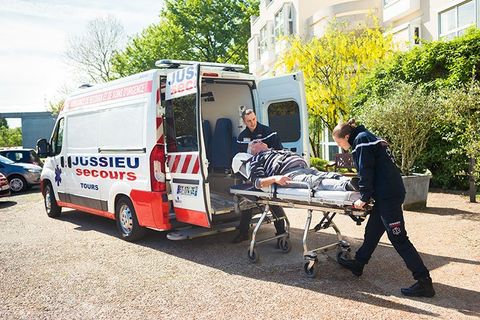
Demande de renseignements
Les données personnelles communiquées sont destinées à Jussieu Secours Tours et ses sous-traitants et sont nécessaires aux fins de vous contacter. Vous disposez de droits d’accès, de rectification, d’effacement, de portabilité, de limitation, d’opposition, de retrait de votre consentement à tout moment et du droit d’introduire une réclamation auprès d’une autorité de contrôle, ainsi que d’organiser le sort de vos données post-mortem. Vous pouvez exercer ces droits par voie postale à l'adresse 13 Rue de la Tuilerie, 37550 Saint-Avertin, ou par courrier électronique à l'adresse [email protected]. Un justificatif d'identité pourra vous être demandé. Nous conservons vos données pendant la période de prise de contact puis pendant la durée de prescription légale aux fins probatoire et de gestion des contentieux.
Rejoignez le réseau JUSSIEU secours et bénéficiez d'une formation valorisante
En nous rejoignant, chaque collaborateur :
- Fait le choix d’exercer le métier d’ambulancier, d’auxiliaire ambulancier ou de conducteur de taxi au sein du service national d’ambulance,
- Bénéficie d’une diversité de missions,
- Exerce avec des véhicules et des équipements récents,
- Suit des protocoles élaborés dans le cadre de la certification ISO 9001,
- Evolue au sein d’un service de santé effectuant des missions de service public depuis plus de 20 ans sur le territoire national.
145 centres JUSSIEU secours à travers la France
Plus de 4 880 collaborateurs professionnels de santé, 3 200 véhicules d’intervention, des questions contactez-nous :, des ambulanciers qualifiés.
Professionnels de santé, les ambulanciers JUSSIEU secours sont formés pour la prise en charge de patients en situation de détresse ainsi qu’aux gestes de premiers soins et de secours d’urgence.
Afin d’assurer les prises en charge de patients, l’ensemble des collaborateurs JUSSIEU secours dispose de l’AFGSU2 (Attestation de Formation aux Gestes et Soins d’Urgence de niveau 2) et de formations spécifiques à l'exemple du programme PHTLS (Pré Hospital Trauma Life Support).
Lors de leur entrée au sein du réseau, chaque ambulancier bénéficie d’une formation initiale puis d’une formation continue afin de toujours conserver un haut niveau de prestation .
Matériel adapté à chaque besoin
Les ambulances du réseau JUSSIEU secours sont équipées de matériels de diagnostic et de soins standardisés afin d’assurer une prise en charge de qualité en respectant les exigences de la chaîne des soins.
Les priorités médicales, ainsi que le confort et la sécurité du patient constituent la préoccupation majeure de JUSSIEU secours.
Une expertise au service des patients et établissements de santé
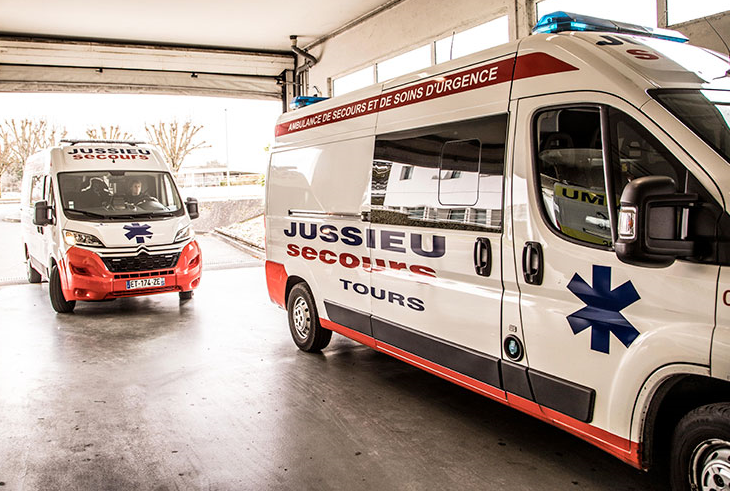
Titre H3 - DG
Texte description - Design global

Besoin d'une ambulance ?
Contactez- nous , créé il y a plus de 20 ans, le réseau jussieu secours bénéficie d’une notoriété sans équivalent dans le milieu hospitalier., 1er maillon de la chaîne des soins, les équipages ambulanciers jussieu secours assurent des prestations de transport sanitaire en accompagnant les patients, personnes blessées, accidentées ou parturientes vers les structures de santé., nous retrouver, les horaires.
SARL BARTHES
Mentions Légales - infos cookies - Réalisé par solocal
Drona Group : Ambulance, Tours & Taxi Services.
- 24/7 Hours Ambulance Service

Call us now +91 9497727278
Email now [email protected].
- Vision & Mission
- Taxi Service
- Ambulance Service
- ICU Ambulance service
- Mortuary Unit
- Plans & Packages

Welcome to DRONA ONLINE, your trusted provider of ambulance, taxi, and tour operator services. We are committed to delivering excellence, reliability, and customer satisfaction in every aspect of our operations.
Our ambulance service is equipped with state-of-the-art vehicles and staffed by highly trained professionals who prioritize patient safety and comfort. We respond swiftly to emergencies, ensuring that you or your loved ones receive the best possible medical attention during critical times.
For your everyday transportation needs, our taxi service offers a hassle-free and convenient way to get around. Our fleet of well-maintained taxis and professional drivers are at your service, ensuring a comfortable and reliable journey to your destination Additionally, our tour operator services provide memorable experiences tailored to your interests.

DRONA GROUP
Why choose us.
- 24/7 Available
- Fast & Safe Services
- Best Price Guarantee
- Trained Drivers

Services we offer
A/c & non a/c ambulance.
We provides highly specialized A/C or Non A/c Ambulance service to all over the areas.
Oxygen Facility
Our Ambulance consists of the oxygen facility for the emergency needed patients.
EMERGENCY SERVICES
We are rigorously trained and certified to the highest competency standards for providing state-of-the-art life-saving techniques and treatments.
NON-EMERGENCY SERVICES
Ambulance Service contracts with hospitals, nursing homes, home health and hospice agencies, managed care facilities, and most insurance companies.
ADVANCED LIFE SUPPORT
It is further support for the circulation and provide an open airway and adequate ventilation (breathing).
BASIC LIFE SUPPORT
It is a level of medical care which is used for victims of life-threatening illnesses or injuries until they can be given full medical care at a hospital.
Online Taxi Booking
Nearby Communities
- Upper East Side, NY
- Jackson Heights-Elmhurst, NY
- Central Park, NY
- New York City, NY
- Upper West Side, NY
- Midtown-Hell's Kitchen, NY
- Williamsburg-Greenpoint, NY
- Gramercy-Murray Hill, NY
- East Village, NY
State Edition
National edition.
- Top National News
- See All Communities
Politics & Government
Astoria's paramedics celebrate new $4 million ems station, after spending years in a temporary trailer, the emts who serve astoria have a shiny new home — but hopefully you'll never benefit from it..

Nick Garber , Patch Staff

ASTORIA, QUEENS — The paramedics who serve Astoria are moving their headquarters from a trailer below the Triboro Bridge to a shiny new $4 million facility — but hopefully you'll never need to benefit from it.
Fire Department officials cut the ribbon Tuesday for the new EMS Station 49, on 42nd Street north of 20th Avenue in Astoria. Housed within an industrial building, the 26,000-square-foot station cost $4 million to build after construction began in early 2020.
It will serve residents of Astoria and surrounding communities in Queens, according to the FDNY.
Find out what's happening in Astoria-Long Island City with free, real-time updates from Patch.
"Station 49 is essential to our Department’s operations and to the health and safety of all Queens residents," acting Fire Commissioner Laura Kavanagh said in a statement.

More than 120 EMTs and paramedics will work each day at Station 49, which includes 12 ambulance bays, 150 lockers and storage area for PPE, offices for the lieutenants and station captain, a conference room, kitchen and dining area, and a lactation room for personnel who are nursing mothers.
Also part of the facility is a memorial for former Batallion 49 paramedic Carlos Lillo , who died in the Sept. 11 attacks at the age of 37, as Queens Post reported .
The station will run 28 ambulance tours each day, according to the FDNY said. It replaces the station's temporary location in an office trailer on Hoyt Avenue South below the Triboro Bridge, which opened in 2014.
First established in 1996, Station 49 was initially located in the basement of Mount Sinai Hospital Queens on 30th Avenue, before being displaced due to the hospital's renovation. The station's new home on 42nd Street is being leased by the city's Department of Citywide Administration Services.
Get more local news delivered straight to your inbox. Sign up for free Patch newsletters and alerts.
More from Astoria-Long Island City
Examining the City’s Response to Medical Emergencies 1999-2011:
With More Ambulances on the Streets Response Times to Serious Medical Emergencies Improve
PDF version available here .
While questions about the city’s timely response to medical emergencies has been a subject of considerable public interest in recent weeks, it is a topic that policymakers have grappled with for many years. In 1996, the Giuliani Administration shifted responsibility for running the city’s Emergency Medical Services ambulances from the public hospital system to the fire department. This was done to better coordinate ambulance and firefighter responses to medical emergencies as well as to reduce redundant staffing in the agencies.
When the fire department took over operation of the city’s ambulances and the dispatching of both public and private ambulances, a goal was set of responding to 90 percent of serious medical emergencies with an Advanced Life Support ambulance staffed with paramedics in 10 minutes or less. To review the city’s progress in achieving that goal, IBO has obtained data from the fire department on the response to each medical emergency in the city reported to 911 from 1999 through 2011 (a period that predates the new dispatch system). In this report, we review what these data show about trends in the delivery of emergency medical services in New York City. Among our findings:
• There has been a significant increase in the average daily number of fire department and private ambulances deployed on city streets. There was a combined average of 976 eight-hour ambulance work shifts or tours in 2011, an increase of 242 tours (33 percent) since 1999.
• The greater number of ambulances has been accompanied by swifter responses to medical emergencies. The share of serious medical emergencies responded to within 10 minutes by paramedics increased from 64 percent in 1999 to 81 percent in 2011.
• Disparities in response times among the five boroughs also narrowed. For example, in the Bronx in 1999 only 54 percent of serious medical emergencies had an ambulance staffed by paramedics arrive in 10 minutes compared with 71 percent in Manhattan, a difference of 17 percentage points. In 2011, the share of responses by paramedics within 10 minutes had increased to 80 percent in the Bronx and 83 percent in Manhattan—a difference of just 3 percentage points.
In addition to improved response times, there are far fewer instances in which no paramedics arrive at the scene of a serious medical emergency, leaving management of the emergency to emergency medical technicians whose training enables fewer medical procedures. In 1999, paramedics failed to arrive for serious emergencies 29,000 times. By 2011, the number of serious emergencies for which paramedics never arrived had fallen to 5,150. The greatest improvement was in the Bronx, where the share of serious emergencies without paramedics fell from 11 percent in 1999 to 2 percent in 2011 .
In March of 1996, responsibility for operation of the city’s own ambulance system, known as Emergency Medical Services (EMS), passed from the Health and Hospitals Corporation (HHC) to the fire department (FDNY). Among the anticipated benefits of the FDNY takeover of EMS were better coordination between ambulances and the increasing number of firefighter units responding to medical emergencies, as well as a consolidation of redundant supervisory, administrative, and support units.
A System of City and Private Ambulances. Emergency medical personnel responding to medical emergencies reported through the 911 system are deployed either in city or private ambulances. City ambulances are operated and staffed by the fire department, while private ambulances participating in the 911 system are operated directly by private hospitals or by commercial ambulance companies operating under contract with private hospitals. 1 Private ambulances, often referred to as voluntary ambulances, can participate in the 911 system only after the fire department has authorized them to do so and has assigned them areas of the city to cover. The hospitals are not paid by the city for operating 911-dispatched ambulances. While they charge fees for transporting patients, the fee revenue often does not cover the hospitals’ costs of staffing and operating the ambulances. For the hospitals, the financial benefits of providing ambulance services primarily flow from the patients who are brought to their emergency rooms and/or admitted to their hospitals—patients who otherwise might have been taken to other hospitals, including those run by HHC. 2
The decision to assign either a FDNY or private ambulance is made by FDNY dispatchers and is based on the availability of the nearest appropriate city or private ambulance at the time. In 2011, the fire department directly operated almost two-thirds (63 percent) of all ambulance tours (eight- hour shifts), with the remaining 37 percent provided by private ambulances. Regardless of whether it is an EMS or voluntary ambulance, city protocol generally calls for patients to be brought to the closest emergency room appropriate for their medical condition, whether it is at a HHC facility or a private hospital. 3
Categorizing Medical Emergencies. Medical emergency calls received by the 911 system are categorized according to perceived seriousness, with a basic distinction being Advanced Life Support (ALS) incidents versus generally less serious Basic Life Support (BLS) incidents. 4 There were just over 325,000 ALS incidents in 2011, or about one-quarter of all medical emergencies. 5 They included cardiac conditions, difficulty in breathing, unconsciousness, major burn cases, and other serious medical emergencies. The remaining three-quarters of reported medical emergencies were designated as BLS incidents, and included a wide range of conditions such as noncritical injuries, conditions involving emotionally disturbed patients, patients with abdominal pain or other sickness, and drug and alcohol abuse cases.
The level of response to a given medical emergency is determined by its seriousness. Advanced Life Support ambulance units, which respond to the most serious emergencies, are required to be staffed with two paramedics in New York City. Elsewhere in the state, an ALS ambulance can be staffed with one paramedic and one emergency medical technician (EMT). 6 In contrast, Basic Life Support ambulances that primarily respond to less serious incidents are staffed with two EMTs. For certain emergencies, such as cardiac arrest and choking cases, ALS and BLS ambulances are both sent to respond. Some incidents that are initially categorized as only requiring a Basic Life Support ambulance staffed by EMTs are instead later found to require the skills of a paramedic. In these cases an Advanced Life Support ambulance, if available, is then dispatched.
All ambulance personnel dispatched to medical emergencies, whether deployed in city or private ambulances, are New York State certified either as paramedics or emergency medical technicians. Paramedics are more highly trained than EMTs; paramedics receive some 1,500 hours of training, compared with 120 hours to 150 hours for EMTs. Paramedics’ higher level of training allows them to perform a range of advanced medical procedures, including inserting breathing tubes as well as injecting or otherwise administering drugs. On average, paramedics deployed in FDNY ambulances cost the city about $22,000 more per year than EMTs. Average compensation (including salary and all fringe benefits) for paramedics totals about $92,000 per year; the average for EMTs is about $70,000.
Firefighter Response to Medical Emergencies. Ambulance response to medical emergencies deemed life threatening is now frequently supplemented by dispatch of a firefighting company. All FDNY engine companies are now CFR-D qualified, signifying that at least some of the firefighters onboard are trained in both cardiopulmonary resuscitation and defibrillation, the latter often a critical step in reviving heart attack victims. However, firefighters are in general not as highly trained in emergency medical procedures as EMTs or paramedics, and an ambulance is sent to medical emergencies regardless of whether firefighters also respond.
The frequency with which firefighters respond to medical emergencies has increased sharply since the FDNY took charge of the system in 1996. Firefighters were dispatched to roughly 157,000 medical emergencies in 1999, up from just 2,000 medical emergencies in 1993. By 2011, the ratio of medical emergency incidents to fire incidents responded to by firefighters had risen to more than 5 to 1.
Due to the number and location of firehouses throughout the city, firefighters are frequently the first to arrive at the scene of medical emergencies, often stabilizing injured or critically ill patients until an ambulance arrives. On average, firefighters responded in 4.3 minutes to the life threatening medical emergencies to which they were dispatched in 2011. In contrast, the first ambulance to arrive at the scene of medical emergencies did so in an average of 6.5 minutes.
City Ambulance Costs and Revenues. The FDNY operated an average of about 605 ambulance tours per day in 2011. Based on an average cost per tour of $1,731 as reported in the Mayor’s Management Report, the annual cost (including health insurance, pensions, debt service, leasing, dispatching of public and private ambulances, fuel, and other operating expenses) of FDNY-managed ambulance operations was about $382 million. Roughly half of city spending on FDNY’s provision of EMS services is offset by revenues generated from billing private insurance companies, Medicare, Medicaid, and self-paying individuals. In fiscal year 2011, these revenues totaled $177 million.
The city’s current financial plan estimates that EMS revenue will climb to $203 million this fiscal year, primarily as a result of an increase in fees for ambulance services.
Notable EMS Trends
IBO’s review of EMS response data and other related developments from 1999 through 2011, a period of time that predates the switch to the new 911 system, reveals a number of significant trends. These include an increase—particularly in the first few years—in the average daily number of both FDNY and private ambulances responding to medical emergencies, generally faster response to serious medical emergencies, and a narrowing of interborough disparities in medical emergency response time.
More Ambulances Deployed on City Streets. On average, there were 976 eight-hour ambulance tours provided each day on city streets in 2011, an increase of 242 tours (33 percent) from the comparable 1999 figure. The overall expansion in ambulance tours stemmed primarily from additional ambulances deployed by private hospitals; 37 percent of ambulance tours were operated by private ambulances in 2011, up from 27 percent in 1999.
The increase in ambulance tours differed between the two types of ambulance units. There was a 52 percent increase in combined FDNY and private ALS tours, while the increase in combined BLS tours was 25 percent. As of 2011, ALS ambulance tours comprised 36 percent of all tours, up from 31 percent in 1999.
The number of both city and private ambulance tours was rising before 1999, with increases in private tours outpacing increases in city-staffed tours. There were on average fewer than 100 private ambulance tours a day back in 1990, a number which more than doubled by 1999 and continued to grow in subsequent years, reaching 369 in 2002. The Giuliani Administration had encouraged privatization at HHC, and argued that increasing the number of private ambulances in the system was the most cost-effective way to increase the number of ambulance tours by allowing the city to avoid some of the increased staffing and operating costs stemming from the overall expansion of the system. 7 The number of city-operated tours also grew between 1990 and 1999, although in this case, much of the growth occurred between 1993 and 1997. 8 The increase in city-operated ambulance tours in those years was consistent with the Giuliani Administration’s contention that merging EMS into FDNY would allow paramedics and EMTs who had previously been assigned to supervisory, administrative, and support roles within the Health and Hospitals Corporation to be shifted to providing direct patient services.
Under the Bloomberg Administration, the annual average number of private ambulance tours continued to grow reaching a peak of 401 in 2005, before declining somewhat in subsequent years due to private hospital closures or consolidations. To compensate for the drop in private ambulance tours since 2005 the FDNY increased city-operated tours, with the latter reaching a daily average of 616 by 2011. 9
Faster Response to Advanced Life Support Incidents. Speed is essential in responding to any medical emergency, particularly the most serious emergencies requiring an ALS response by paramedics. Despite a roughly 11 percent increase in the number of ALS incidents between 1999 and 2011, the even more rapid growth in ambulance tours along with the more frequent dispatch of firefighters to medical emergencies has led to swifter responses to these incidents. The median response time of the first ALS ambulance to arrive at the scene of a serious emergency fell from 7.9 minutes in 1999 to 6.5 minutes in 2011, a decline of nearly 18 percent. Over the same period, the median response time for the first ALS ambulance, BLS ambulance, or firefighter unit to arrive at the scene of a serious medical emergency fell more than 14 percent, from 5.6 minutes to 4.8 minutes. 10
Still Not Meeting ALS Response-Time Goal. Although EMS response time has improved considerably, in 2011 the city was still falling short of its own longstanding performance objective for responses to Advanced Life Support incidents. Until this year, the FDNY’s stated performance objective was for at least 90 percent of ALS incidents citywide to receive a paramedic-level response within 10 minutes. In 2011, 81 percent of ALS incidents received a paramedic response within 10 minutes, up from 64 percent in 1999. To meet the 90 percent objective in 2011 would have required improved response time for an additional 28,000 ALS incidents (see sidebar).
Perhaps of greatest concern are serious medical emergencies in which only a BLS ambulance staffed by emergency medical technicians was dispatched without concurrent or subsequent dispatch of an ALS ambulance, or instances in which paramedics took an exceptionally long time to arrive at the scene of ALS incidents. Significant progress has been made towards reducing occurrences of the former but not the latter. The share of ALS incidents receiving only a BLS-level response fell sharply, from 10.9 percent in 1999 to just 1.7 percent in 2011—from just over 29,000 incidents to about 5,200. But while the share of ALS responses exceeding 15 minutes edged down over the same period, the number of very long ALS responses actually rose from roughly 18,900 in 1999 to over 20,000 in 2011.
Response Times by Borough. Analysis of ALS incident response times at the borough level shows that the share of incidents receiving a paramedic response within 10 minutes improved in each borough from 1999 through 2011. Improvement was most marked in the Bronx where the share of serious incidents receiving an ALS response within 10 minutes climbed from 54 percent in 1999 to 80 percent by 2011. Moreover, interborough disparities declined over the same period. In 1999, the difference between the borough with the greatest share of serious incidents receiving an ALS response within 10 minutes (Manhattan) and the borough with the lowest share (the Bronx) was 17 percentage points. By 2011, the difference had shrunk to 6 percentage points. Brooklyn and Manhattan, each with 83 percent of serious incidents receiving an ALS response within 10 minutes in 2011, came closest to meeting the city goal at the time of at least 90 percent.
Over the 1999-2011 period each borough also had a decline in the number of instances that an ALS ambulance was supposed to show up but never arrived. The decline was most marked in the Bronx, where the share of such incidents fell from 19.9 percent in 1999 to 1.9 percent by 2011. Once again, there was also a decline in interborough disparities over the same period. In 1999, the difference between the borough with the greatest share of serious incidents not receiving an ALS response (the Bronx) and the boroughs with the lowest share (Queens and Staten Island) was 14.9 percentage points. By 2011, the difference had shrunk to 1.4 percentage points.
Faster response to ALS incidents by paramedics in each borough is consistent with the sizable increase in combined city and private ALS ambulance tours. Workload, measured by the average daily ratio of serious medical incidents to ALS ambulance tours, dropped in all boroughs and citywide between 1999 and 2011. The biggest decline occurred in the Bronx, where ALS incidents per tour averaged 2.8 in 2011, down from 4.7 per tour in 1999. With fewer incidents per tour, units are more likely to be free to respond promptly to new calls.
Variations by EMS Dispatch Area. Just as there are differences in EMS response times across boroughs, response times within boroughs also vary. IBO looked at variation in response times across 31 EMS dispatch areas.
The maps above show the share of ALS incidents in each dispatch area responded to by an ALS ambulance within 10 minutes. In 1999, all five boroughs had dispatch areas in which fewer than 70 percent of ALS incidents received a paramedic response within 10 minutes. By 2011, there were none. Yet throughout Queens as well as in northern Manhattan, southern Brooklyn, northeastern Bronx, and southwestern Staten Island, there were still dispatch areas in which less than 80 percent of serious incidents received a paramedic response within 10 minutes. In 2011, there were still no dispatch areas that met the city’s goal at the time of securing a paramedic response to at least 90 percent of ALS incidents in 10 minutes or less.
The maps on the below show the proportion of ALS incidents in each dispatch area where the response was either by an ALS or by a BLS ambulance within 10 minutes. Again one can see improvement in ambulance response from 1999 through 2011—several dispatch areas concentrated in midtown Manhattan, Brooklyn, and the northern portion of Staten Island saw at least 90 percent of ALS incidents receiving at least a BLS response within 10 minutes. On a citywide basis, the share of serious incidents responded to within 10 minutes by either an ALS or BLS ambulance increased from 77 percent in 1999 to 89 percent in 2011.
The final set of maps shown below includes responses by firefighters. By 2011, firefighters were extensively involved in responding to medical emergencies so that in all but three dispatch areas 90 percent or more of serious medical incidents received at least a firefighter response within 10 minutes. On a citywide basis, the share of ALS incidents responded to within 10 minutes by either an ALS or BLS ambulance or firefighters increased from 84 percent in 1999 to 93 percent in 2011.
More Ambulances, Faster Responses
The timeliness of responses by paramedics to serious medical emergencies has improved since 1999. A significant factor aiding the improved response time is the sizable increase in the average daily number of FDNY and private ambulances deployed on city streets in recent years. The number of private ambulance tours grew rapidly in the late 1990s and early 2000s even as the number of city ambulance tours was also growing, although at a slower pace. As a result, the share of tours provided by private ambulances grew from 17 percent in 1990 to 43 percent in 2005. As a number of private hospitals have closed or consolidated, the share of private ambulance tours has fallen somewhat and the FDNY has added city ambulances to compensate. By 2011, the share of private ambulance tours had fallen to 37 percent.
Despite the improvement from 1999 through 2011 in the timeliness of paramedic response, the city was still falling short of its goal of securing a paramedic response within 10 minutes to 90 percent of Advanced Life Support incidents. The FDNY’s commitment to this goal was included in the Memorandum of Understanding that accompanied the 1996 takeover of responsibility for EMS operations by FDNY. However, in the Mayor’s Management Report for fiscal year 2012, the fire department’s goal had changed to delivering either a paramedic or EMT response within the 10-minute window at least 90 percent of the time—a goal which was met that year.
Report prepared by Bernard O’Brien,
With assistance by Christina Fiorentini, Nashla Salas, and Asa Wilks
1 There are also a small number of volunteer neighborhood-based or religiously affiliated ambulances seen on city streets. However, these ambulances do not participate in the 911 system in the sense that they are not dispatched by FDNY dispatchers and therefore not included in the data we analyzed. Even in instances in which one of these volunteer ambulance units arrives on the scene of a 911-generated emergency, an FDNY or private hospital ambulance would also be dispatched.
2 Based on interview with staff of Greater New York Hospital Association. Also, in November 2010 the Bloomberg Administration announced plans to begin charging private hospitals a "dispatch fee" for the right to participate in the 911 system. However, imposition of the fee has been delayed pending the outcome of ongoing negotiations.
3 There has long been controversy about how closely this protocol is followed. For example, former City Comptroller Alan Hevesi examined this issue in detail in a June 2001 report entitled " Where Do 911 System Ambulances Take Their Patients? "
4 The terms Advanced Life Support incidents and "serious medical emergencies" are used interchangeably throughout this report.
5 All references to years in this report are calendar years unless otherwise noted.
6 Although the Bloomberg Administration has appealed in the past to the New York City Regional Emergency Medical Council—the state-created group that regulates ambulance staffing—to allow city ALS units to be staffed with one paramedic and one EMT, the policy has not been changed.
6 FDNY Commissioner Von Essen, March 28, 2000, cited in Hevesi 2001 report, pg. 1.
8 Hevesi 2001 report, pg. 6.
9 In 2010, the city added tours to make up for the loss of tours from Caritas, Westchester Square, and Lady of Mercy hospitals. For 2011, tours were added in response to the closing of St. Vincent’s.
10 There were also double-digit percentage declines in the mean response time of the first arriving ALS ambulance, BLS ambulance, or firefighting unit.
Receive free reports by e-mail
Headquarters:
9200 Noble Park Dr,
Brecksville, Ohio 44141
(216) 454-4911
Clinical Education
MEDICAL DIRECTION
Lead Medical Director: Donald K Spaner, MD, President, University Hospitals Health System EMS Institute, Veteran, Colonel (Retired 2019), United States Army (40 Years)
University Hospitals Critical Care Transport Medical Director: Jeffrey Luk, MD, MS, Director, Prehospital and Disaster Medicine, Attending Physician Center for Emergency Medicine, University Hospitals Cleveland Medical Center, Associate Professor, Case Western Reserve University School of Medicine
Bon Secours Mercy Health Critical Care Transport Medical Director: Chad W Donley, MD, FACEP, Chairman and Director, Department of Emergency Medicine, St Elizabeth Youngstown, Regional Medical Director, Mercy
CLINICAL HIGHLIGHTS
Our EMS Division consists of Advanced Life Support (ALS), Basic Life Support (BLS), and Critical Care (CCT) [co-managed by UH and Mercy Health in various markets]. We also maintain a small Wheelchair Van Services Division (WC) for our hospital clients and private pay patient appointments.
All EMS Protocols are reviewed and updated annually
We operate at 100% compliance under an aggressive and progressive Standard of Care protocol
We are 100% American Heart Association (AHA) Level I compliant
Monthly Run Reviews are held at our Cleveland Headquarters (broadcasted via Zoom to all locations) and are always taught by one of our Medical Directors, on-site
Continuing Education opportunities are held both on-site and off-site, in coordination with the University Hospitals Health System EMS Institute (all UH AHA courses are free of charge)
CLINICAL CAPABILITIES
Cardiac Monitoring with 12 Lead EKG
12 Lead Transmission
Waveform Capnography
Monitoring Capabilities: Spo2, BP, Temperature, Glucose
Portable Ventilators with BiPAP (all Paramedic trained)
IV Pump Management
Can take any medication on a fixed rate
Specialty resuscitation devices, ResQPOD and ResQGARD
Pediatric car seats
Leather restraints
Quick Trach Cricothyrotomy
Fully stocked Medication Boxes
Induced Hypothermia: chilled saline and passive cooling capabilities
Salvage Airways: King Airways and LMA Devices
5-Point Shoulder Harnesses on all ambulances cots for maximum patient and safety crew
Bariatric Management
AMBULANCE VIRTUAL TOURS
https://my.matterport.com/show/?model=WCRNzNyw4Ma&utm_source=4
https://my.matterport.com/show/?model=CW7EFqFTW7G&utm_source=4
https://my.matterport.com/show/?model=RvvbEU8K4Ku&utm_source=4
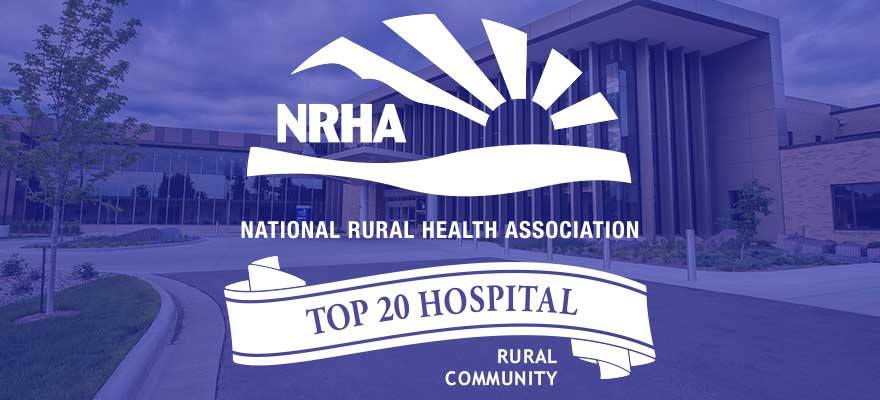
We're a TOP 20 HOSPITAL!
For the seventh time, the National Rural Hospital Association has named us as a Top 20 Rural Community Hospital in the nation!
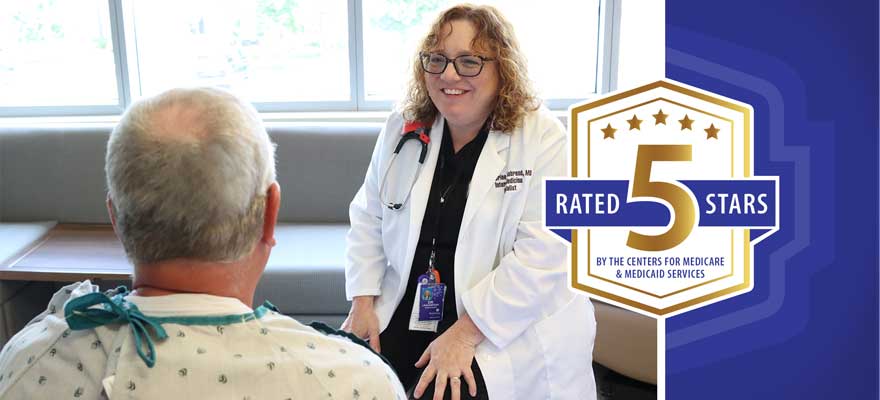
Rated 5-Stars
Brookings Hospital is rated five-stars by the Centers for Medicare & Medicaid Services, the highest score possible for all hospitals nationwide!
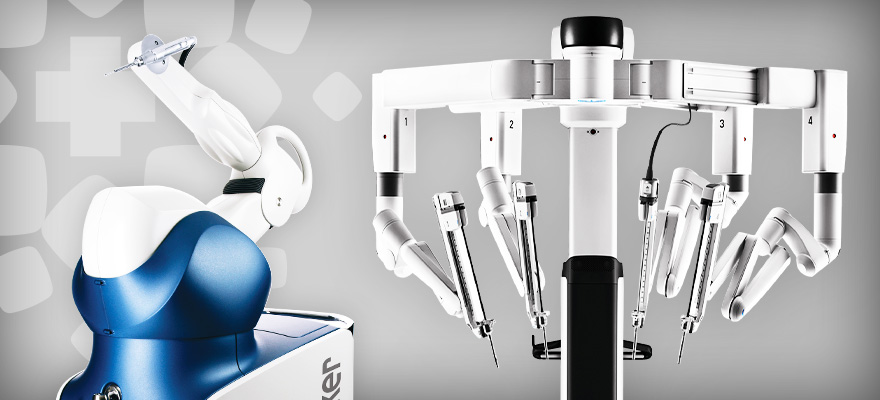
Rural Leader in Surgical Robotics
Patients receive the best of both worlds: the most advanced technological care delivered by experienced surgeons and skilled staff who treat patients like family.
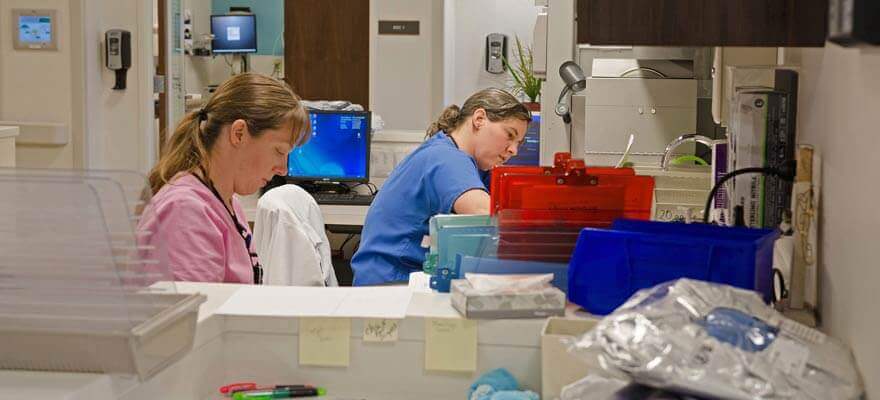
Join Our Team
Have a passion for health care? We have Brookings job opportunities and are looking for team players to join our organization.
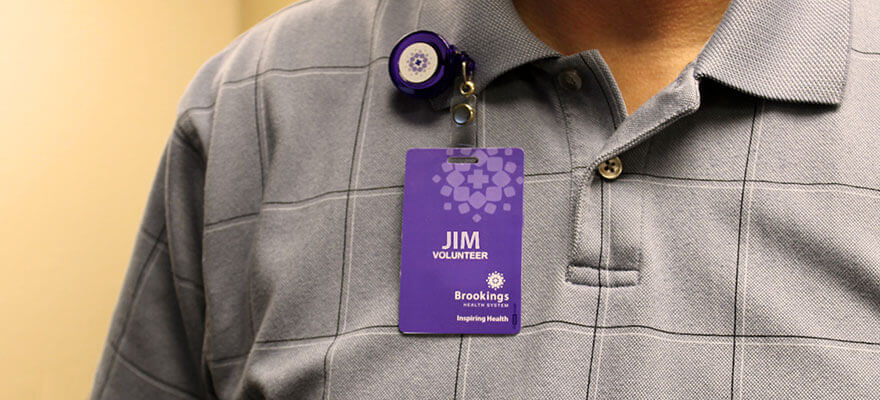
Volunteer Opportunities
We welcome community members looking for Brookings volunteer opportunities to give their time and talent to our organization.

Pay My Bill
Pay your Brookings Health System bill quickly and securely online.

Call our gift shop at (605) 696-8860 to place an order over the phone for a hospitalized patient.
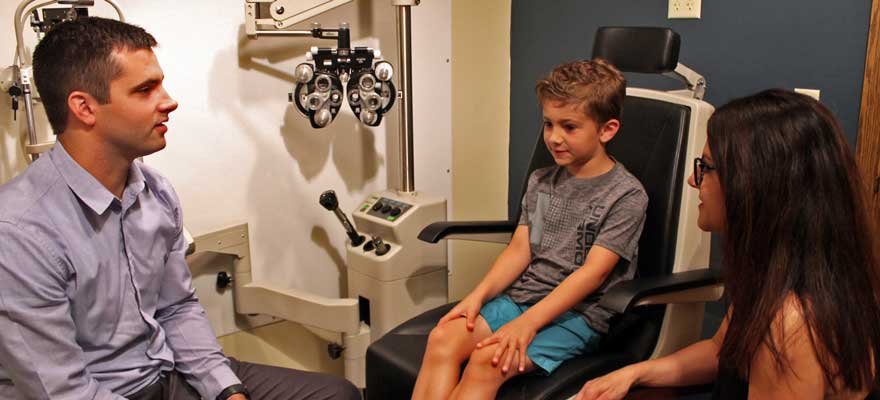
Need New Glasses?
No matter what your eyesight needs, Yorkshire Eye Clinic & Optical has a vision solution for you.
Ambulance Tour

South East Coast Ambulance Service
Ambulance Virtual Tour
Ambulance virtual tour
360° Panoramas are an ideal medium for training and familiarisation. South East Coast Ambulance Service (SECAM) approached Pan 3Sixty to create a 360° panorama of the interior of their a mbulances to be used as part of their paramedics training program. Using pop-up information points illustrated with still photographs, the panorama illustrates what equipment is stored in what compartment.
As part of the training program, paramedics spend time in an ambulance to familiarise themselves with the interior storage compartments and equipment onboard. Whilst the familiarisation process is a crucial part of the training, the time spend onboard an ambulance is limited due to operation pressures on the vehicles.
The 360° panorama now provides unlimited access to the ambulance, enabling both trainee and qualified paramedics to refer back to their training as they require.
Training & familiarisation virtual tours

The General Optical Council

Conergy Solar Farm

All South East Coast Ambulance Service (SECAM) paramedics spend time in our ambulances to familiarise themselves with the equipment onboard and memorise what is stored in every compartment and every draw.
In an ideal world, paramedics will be able to spend as much time onboard an ambulance as required, but with the time restraints on the ambulances, SECAM needed a way to enable staff to access and explore an ambulance without taking the vehicle out of service. After considering various options, we decided to create a 360° virtual ambulance tour.
Having investigated their work and received a detailed and helpful response to our initial enquiry, SECAM selected Pan 3Sixty to create the virtual tour.
Pan 3Sixty was thoroughly professional throughout the process, which could not have been made easier, and SECAM are very impressed with the result. The finished ambulance virtual tour perfectly fulfils our requirements, and the clarity of the 360° photography is superb. The virtual tour is now an integral part of our paramedic training scheme and is a useful resource for our trainee paramedic’s to refer back to as and when needed.
I have no hesitation in recommending Pan 3Sixty to other Ambulance Services seeking to create a similar virtual tour. They deliver a high quality product that is excellent value for money.
Clinical Education Lead
Are you interested in a 360° virtual tour for familiarisation training?
We’d love to hear from you. Please call us on 0845 644 3605 to discuss your requirements or arrange a meeting. Alternatively, you can fill out the short form on our contact page to tell us about your ideas.
- Share on Facebook
- Share on Twitter
- Share on LinkedIn
- Share by Mail
About Pan 3Sixty
Pan 3Sixty is a specialist photographic company producing high quality 360° virtual tours, gigapixel panoramas and panoramic photography.
Since early 1999 we have had the pleasure to work for a wide variety of clients, creating 360° virtual tours to meet a diverse range of requirements. To mention a few, commissions have taken us from the ‘Top of Europe’ at Jungfraujoch in Switzerland to the depths of First World War tunnels cut into the Somme battlefields, from the heat and the noise of the pits at the British Grand Prix to the tranquil grounds of the Henry Moore Foundation, onto the bow of Queen Mary 2 sailing into New York, into the cockpit of an Avro Lancaster, up Tower Bridge, down a mining school in Cornwall.
Whatever your project, we’d love to hear from you. We are always happy to explore new ideas and advise on how to create a 360° virtual tour that will work for you.
Pan 3Sixty Limited Nether Street Widford Hertfordshire SG12 8TJ
tel: +44 (0) 845 644 3605
You can also fill out the short form on our contact page to tell us about your ideas.
Join our mailing list
Subscribe to our newsletter for quarterly updates on services, work and offers.
Email Address *
First Name *
Last Name *
Company Name *
I agree to the terms and conditions laid out in the Privacy Policy *

This site uses cookies. By continuing to browse the site, you are agreeing to our use of cookies.
Cookie and Privacy Settings
We may request cookies to be set on your device. We use cookies to let us know when you visit our websites, how you interact with us, to enrich your user experience, and to customize your relationship with our website.
Click on the different category headings to find out more. You can also change some of your preferences. Note that blocking some types of cookies may impact your experience on our websites and the services we are able to offer.
These cookies are strictly necessary to provide you with services available through our website and to use some of its features.
Because these cookies are strictly necessary to deliver the website, refuseing them will have impact how our site functions. You always can block or delete cookies by changing your browser settings and force blocking all cookies on this website. But this will always prompt you to accept/refuse cookies when revisiting our site.
We fully respect if you want to refuse cookies but to avoid asking you again and again kindly allow us to store a cookie for that. You are free to opt out any time or opt in for other cookies to get a better experience. If you refuse cookies we will remove all set cookies in our domain.
We provide you with a list of stored cookies on your computer in our domain so you can check what we stored. Due to security reasons we are not able to show or modify cookies from other domains. You can check these in your browser security settings.
We also use different external services like Google Webfonts, Google Maps, and external Video providers. Since these providers may collect personal data like your IP address we allow you to block them here. Please be aware that this might heavily reduce the functionality and appearance of our site. Changes will take effect once you reload the page.
Google Webfont Settings:
Google Map Settings:
Google reCaptcha Settings:
Vimeo and Youtube video embeds:
You can read about our cookies and privacy settings in detail on our Privacy Policy Page.
Overworked, underpaid and understaffed: EMS in crisis as NYC faces tridemic
Inadequate staffing, longer hours and surging 911 calls put residents at risk, by bob hennelly.
This article originally appeared on Work-Bites

New York City's 911 EMS daily call volume has reached 4,500 on multiple days this month, and FDNY EMS unions warn current staffing is so inadequate three years into the Covid pandemic it puts their members at greater risk while degrading the essential service they provide the public.
Those same EMS labor leaders worry the FDNY's plans next week to reset how EMS members are scheduled could lead to more mandatory overtime, accelerating member burnout and increasing the odds of medical errors.
Union leaders concede last year's 49-month contract deal it reached with the outgoing de Blasio administration made some progress in dealing with the wide pay gap between EMS and other first responders. Yet, they note it fell well short of their goal of pay parity and has not remedied the workforce erosion that drives mandatory overtime and canceled ambulance tours.
Also unaddressed was the disparity in paid sick leave policy with police, fire, correction, and sanitation all being entitled to unlimited sick time — but their EMS colleagues limited to just 12 paid sick days.
The issue of unlimited paid sick-time has taken on a greater sense of urgency now that Covid, which has killed nearly 400 New York City civil servants including several FDNY EMTs, has become part of the further notice, day to day risks all first responders are required to endure without hazard pay.
Both DC 37's Local 2507, representing EMS, paramedics and fire inspectors, as well as DC 37's Local 3621, representing FDNY EMS officers, have filed lawsuits alleging the pay and benefit disparity between them and the other uniform services is due to the fact their members are mostly people of color and female.
In a response to a query listing the EMS union concerns, a spokesperson for FDNY Commissioner Laura Kavanagh wrote "the Commissioner has been a strong advocate for EMS her entire time with the department, including working tirelessly on the contact that established a significant raise for all EMS members and working closely with union leadership on recruitment and retention of EMS members."
Earlier this year, Kavanagh went into more detail during a sit-down interview with this reporter for City & State .
"Economic justice to me is a key issue and to see it in the agency in the future is very important to me," Kavanagh said. "I went to every EMS station at the height of the pandemic in March and April and saw first-hand the impact it was having on EMS – the truly brutal long days, with heart attack after heart attack and seeing so many people pass away. That image stuck with me, and I couldn't let it go. We have to do something about this. We certainly are not there yet. Parity is my goal. My most recent work with the last contract doesn't get us there but I hope it shows a down payment on my commitment because it is the largest increase that they have ever seen in their contract. We want people to make EMS a career."
The Daily News reported on Dec. 31 that the FDNY was promoting Deputy Assistant Chief of EMS Operations Michael Fields effective Jan. 1. Fields, who joined EMS back in 1994, two years before it was merged with the FDNY, will become the first African-American to hold that post previously held by retiring EMS Chief Lillian Bonsignore.
Under that 2021 deal an EMTs' top pay at $53,437 — earned after 5 1/2 years of service — went to $68,700 — with the top rate now reached after five years, with longevity differentials bringing 20-year veterans to $74,100. Paramedics saw their top pay go from $65,000 to $86,379 — with five years' service and 20-year vets getting $91,779 a year.
Far less dramatic was the treatment of a starting salary for EMTs which went from $35,254 to $39,386.
The EMS unions helped to fund the portion of their pay hikes beyond the pattern previously agreed to by DC 37 for the rest of its 125,000-plus members by increasing their work schedules. The city also agreed to a 6-percent pay differential as part of its expansion of the mental-health-response pilot program that pairs EMS workers with mental-health professionals in responding to non-violent mental-health calls that have traditionally been handled by the NYPD.
As part of the contract settlement, the EMS unions also opened the door to the FDNY shifting away from a 12-hour shift schedule to a mix that would include 8:45-hour shifts, increasing the flexibility for management to mandate overtime when relief was unavailable. That new schedule mix starts on Jan. 1.
While federal, state, and municipal elected officials have been promoting a so-called return to a 'post-COVID' normal, public health experts across the country have been warning about a brewing so-called tridemic — COVID, the flu and pediatric respiratory virus all surging simultaneously.
"More than three-quarters of pediatric hospital beds nationwide are at capacity," reported PBS. "And some states are reporting that more than 90 percent of pediatric beds are occupied. Seniors are also being hospitalized at a higher rate to respiratory illness. And hospitalizations from the flu are at a decade-level high."
"I am in the Bronx today and there must have been six or seven fever, cough, cardiac arrests that have come over the radio — the hospitals are just jammed," said FDNY EMS Lt. Anthony Almajore, the vice-president of DC 37's Local 3621. "I was at Bronx Lebanon Hospital and there were 23 ambulances sitting there with patients waiting to be triaged."
A message to the public information desk at the Bronx Lebanon Hospital was not returned on Dec. 30. A spokesperson for Health + Hospitals Corporation, the city's municipally-owned network of 11 hospitals, said the system was busy, but that it was managing. He referenced a press conference held by city health officials and Mayor Adams back on Dec. 20 at which the tridemic was referenced along with a public health suggestion that New Yorkers mask up and make sure they were up to date with their COVID and flu shots.
"With the holiday season in full swing and cases of COVID-19, flu, and RSV rising, we are asking New Yorkers to protect themselves and their loved ones once again. Mask up, get tested, get treated if you're eligible, and, if you haven't gotten your flu shot or your COVID-19 booster, we encourage you to roll up your sleeve," Adams told reporters five days before Christmas.
The EMS unions say there's a disconnect between the tone being set by the Adams administration of business getting back to normal and the actual conditions their members are encountering out on the streets where there's evidence of a deepening healthcare system crisis where many thousands of people continue to turn to the EMS and the emergency for basic healthcare amidst a tridemic.
DC 37 Local 3621 President Vincent Variale notes the department's shortage of paramedics and supervising Lieutenants compounds the problem of poor retention in the ranks of the 3,000 EMTs who often see their job as a just steppingstone to the much better paying firefighter title.
The Local 3621 president estimates he's down around 100 members out of his 500 plus member roster.
"During COVID there have been dozens and dozens of my members who have chosen to retire, and another dozen who just opted to resign and we have had only one class [40 EMS officers] graduate in the last two years — we are grossly understaffed in the Lieutenant rank," Variale said. "New York City is the best EMS teaching school in the country — they get their experience here and they can be welcomed in places like Colorado, Arizona, Florida, and South Carolina. They get hired right away by other agencies because we are New York City EMS and treated like heroes everywhere but here in New York City."
In addition to shortage of Lieutenants, FDNY EMS is short of paramedics. A robust private sector job market that promises better pay and more predictable hours is increasingly appealing to EMS veterans. "If you are a paramedic and a veteran FDNY EMS officer, you can easily work in the urgent care setting anywhere," Variale said. "We just haven't taken the proper care to keep and promotes a structure in place to make this a pleasant or quality work environment so people will stay. New York City is falling apart."
"The EMS staffing is just not there — we are hanging by a thread. I don't want to sound overly dramatic, but on Jan. 1 the FDNY will be deleting units as they convert" to this mixed 12- and 8-hour shifts system which makes it easier to mandate EMS members work eight hours overtime, according to Almajore.
Mike Greco is the vice president of DC 37's Local 2507, which represents EMS, paramedics, and fire inspectors. Greco says the recent run up of call volume is more reminiscent of summertime call volume. "It's absolutely insane," Greco says of the current pace which also includes almost a 12=percent medical leave rate for EMS during the tridemic.
Local 2507 agreed to the FDNY's shifting to a schedule that relies on 8:45 hour and 12-hour shifts, but Greco says the union is completely dissatisfied with the implementation of it and has filed a grievance.
Greco estimates that while the FDNY is at its full 3,000 head count of EMTs, its down 100 of the 1,000 paramedics its budgeted for and is also short field supervision as well as EMS 911 operators. "But the reality is, even if we are staffed at what OMB says we are budgeted for, we remain seriously understaffed — we just need more of everything — if you want to properly run the 911 system and properly serve New York City," Greco said.
EMS union officials also are concerned about the status of the private sector EMS outfits that answer about a third of New York City's EMS 911 calls. "There are always rumors that hospitals are going to pull out of the system like we saw with Transcare [a private EMS provider that went bankrupt in 2016]," Greco said. "Reliance on these private companies isn't good. We don't have a municipal and non-municipal fire apparatus that responds to our fires. We should have a standard of care that's experienced — and that means training and equipment — and the only way to control that is to have it all be under the umbrella of the FDNY."
According to the latest Mayor's Management Report , the overall incidence of medical emergencies increased between Fiscal 2021 and Fiscal 2022 and includes a 9-percent increase in life-threatening incidents. The end-to-end average response time to life-threatening medical emergencies by EMS went from 9:34 in Fiscal 2021 to 10:17 in Fiscal 2022. The peak number of in-service ambulances also dropped from 516 in Fiscal 2021 to 497 in Fiscal 2022. "Dispatch and travel time by ambulances to life-threatening medical emergencies increased 41 seconds," according to the latest MMR.
"Our EMS workers have done the equivalent of war-time service over the past three years," wrote Manhattan Borough President Mark Levine. "And the intensity is not letting up, as covid and other conditions have ensured that demand for emergency medical care remains intense. It's unacceptable that our EMS heroes are still so underpaid. It's long past time they are granted the pay parity they deserve."
Bob Hennelly has written and reported for the Village Voice, Pacifica Radio, WNYC, CBS MoneyWatch and other outlets. His book, "Stuck Nation: Can the United States Change Course on Our History of Choosing Profits Over People?" was published in 2021 by Democracy@Work. He is now a reporter for the Chief-Leader, covering public unions and the civil service in New York City. Follow him on Twitter: @stucknation
Related Topics ------------------------------------------
Related articles.
Nothing here today :)
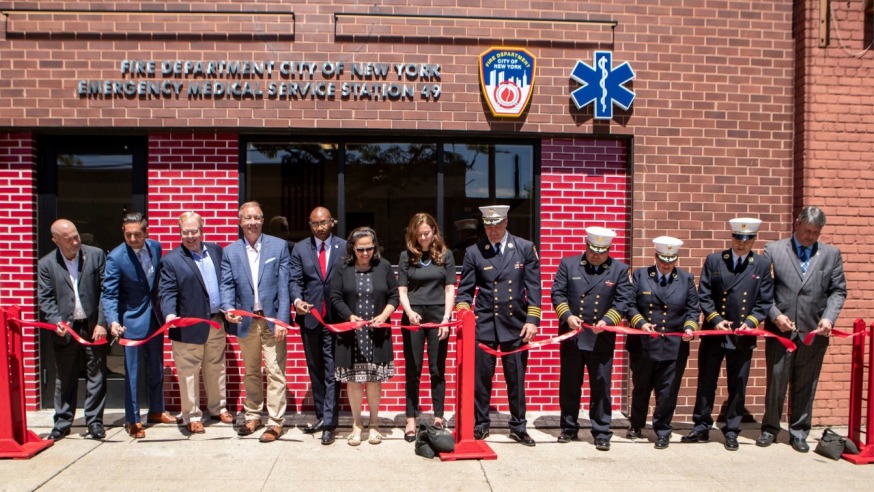
The FDNY has opened a new EMS station in Astoria and local leaders held a ribbon-cutting ceremony inside the facility Tuesday (Photo NYPD)
July 1, 2022 By Michael Dorgan
The FDNY has opened a new Emergency Medical Services (EMS) station in Astoria and local leaders held a ribbon-cutting ceremony at the facility Tuesday.
The facility, called EMS Station 49, will serve as a base for emergency medical technicians (EMTs) and paramedics to serve Astoria and the rest of western Queens. The station is located in the industrial section of Astoria, near the Steinway Creek, at 19-40 42nd St. and is around 26,000 square feet in size.
The facility comes with 12 ambulance bays for its fleet of emergency vehicles, according to the FDNY.

The station is located near the Steinway Creek in the industrial section of Astoria. The 19-40 42nd St. address is marked in red (GMaps)
The station is staffed with more than 120 FDNY medical responders who will operate 28 ambulance tours each day. An ambulance tour represents one emergency vehicle in service for 911 calls for an 8-hour shift.
The facility cost around $4 million, and construction got underway in early 2020.
The FDNY originally opened EMS Station 49 in 1996, and at that time it was housed in the basement of Mount Sinai Hospital in Astoria. In 2013, the hospital underwent a major renovation requiring the station to move. In 2014, the station relocated into temporary space under the R.F.K Bridge while it waited for new space– which led to the opening of the 42 nd Street facility.
Acting Fire Commissioner Laura Kavanagh, Queens Borough President Donovan Richards and EMS Station 49 staff members were among those in attendance to cut the ribbon Tuesday.
“Station 49 is essential to our department’s operations, and to the health and safety of all Queens residents,” Kavanagh said.
“The brave and dedicated men and women who serve in Station 49… deserve this new home because they provide outstanding emergency pre-hospital medical care 24/7 to their patients.”
The station also includes offices for the lieutenants and station captain, a conference room, a kitchen and dining area, and a lactation room for mothers who are nursing. It is also stocked with personal protective equipment and medical supplies for basic and advanced life support.
The facility also has a memorial area to honor the late Carlos Lillo , a former Battalion 49 paramedic who died on 9/11, aged 37. The memorial contains photos of Lillo and his old locker.
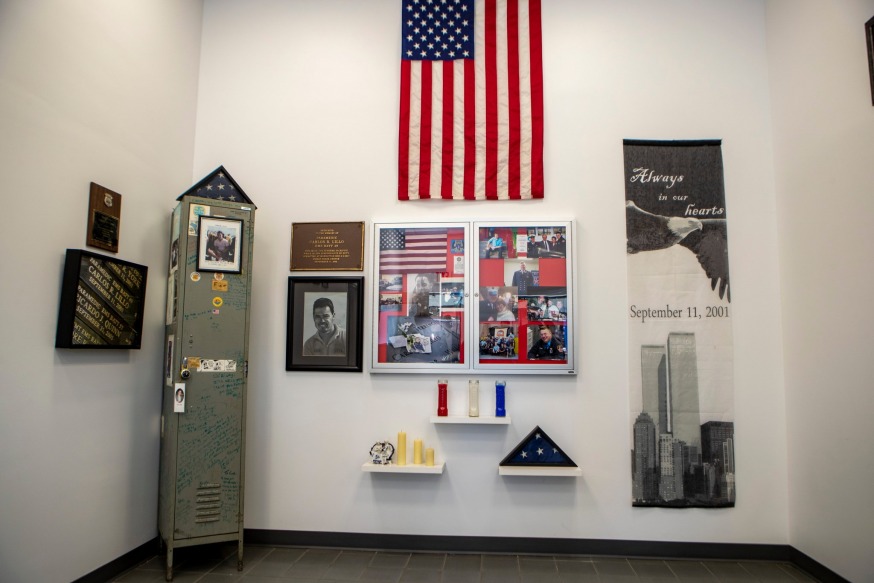
The facility also has a memorial for the late Carlos Lillo, a former Battalion 49 paramedic who died on 9/11, aged 37 (Photo NYPD)
Acting Chief of Department John Hodgens, who also attended the event, said staff at the station play an important role in helping residents with medical difficulties.
“Whenever I come to a new facility – the thought that always comes to my mind is all the outstanding, heroic work that will be done there by our members,” Hodgens said.
“FDNY EMTs and paramedics perform incredible acts each day – and for the members of Station 49, that will begin right here at the start of their tours.”
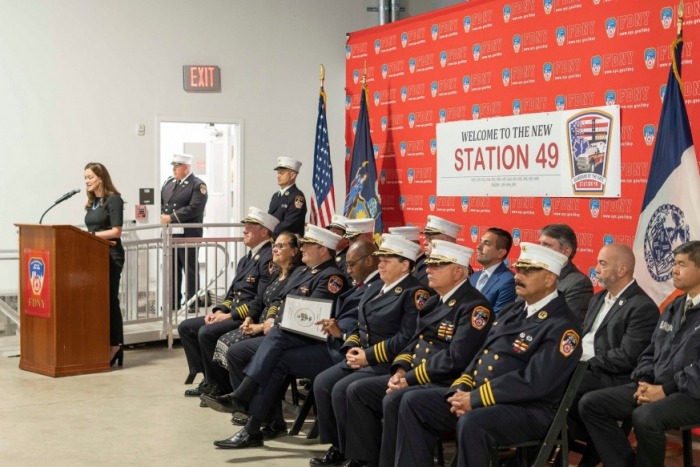
Acting Fire Commissioner Laura Kavanagh speaking at the ribbon-cutting ceremony Tuesday (Photo: FDNY)

Featured Events
Post an Event

Chanticleer Garden Opening

The ABCs of Adoption: Free Information Session

MICROSOFT WORD Y MICROSOFT EXCEL EN ESPAÑOL Woodside Library

Programa De Capacitación Para Pequeñas Empresas Langston Hughes Library

Open Art Play Sky Village NYC

Sheep Shearing Festival Queens County Farm Museum
View All Events…
Leave a Comment Reply to this Comment Cancel Reply
All comments are subject to moderation before being posted.
This site is protected by reCAPTCHA and the Google Privacy Policy and Terms of Service apply.
Recent News
May. 3, 2024 By Iryna Shkurhan
The arts and culture community came together at Queens Museum in Corona Thursday morning to launch the third annual Queens Rising celebration.
May. 3, 2024 By Aidan Pellegrino
This weekend, thousands of people all over the world will be celebrating Cinco de Mayo, a holiday commemorating Mexico’s victory over the French Empire in the battle of Puebla in 1862.
May. 2, 2024 By emarshall
May 2, 2024 By Ethan Marshall
May 2, 2024 By Czarinna Andres
The Isamu Noguchi Foundation and Garden Museum in Long Island City recently announced that David Huang’s “Hands Toward the Universe” has triumphed in its third annual Open Call for Artist Banners .
May 2, 2024 By Iryna Shkurhan
The Chocolate Factory Theater , an experimental arts company in Long Island City , announced a jam-packed day of community engagement for its second annual Mother’s Day Block Party and Open House.
May. 1, 2024 By Ethan Marshall
Queens Assemblymember Jessica González-Rojas and State Senator John Liu joined community advocates Tuesday to celebrate the passage of Sammy’s Law, a legislation that allows for New York City to determine its own speed limits, in the latest New York State budget.
May. 1, 2024 By QNS News Team
Last November , when New York Mets owner Steve Cohen and Queens community leaders unveiled the proposal for Metropolitan Park, local restaurant owner Manji Singh was all in.
The number of vehicle thefts across northern and southern Queens increased during the 28-day period from April 1-28, compared to the same period of time last year, according to the latest crime stats released by the NYPD Monday. At the same time, grand larcenies were down across the borough.
Apr. 30, 2024 By emarshall
Apr. 30, 2024 By Ethan Marshall
Apr. 30, 2024 By Bill Parry
A persistent panhandler was punched out by an angry commuter on board a northbound E train at the Queens Plaza subway station on Sunday, Apr. 21.
Around Queens
Pedal to the mettle: TD Five Boro Bike Tour sees thousands go the distance despite the dreary weather Read More 0 -->
Queens baby shower shooting: Police identify murder victim as search continues for killer who wounded three others Read More 0 -->
City Council seeks probe into NYPD brass’ ‘intimidating and dangerous’ social media activity Read More 0 -->
Marty Dolan officially on ballot for June Democratic primary, AOC faces challenger Read More 0 -->
Gun violence intervention Read More 0 -->
Family reacts to shocking footage of 19-year-old Win Rozario who was killed in police shooting Read More 0 -->
In Brooklyn
Come adopt a puppy during ‘Woofstock’ in Park Slope Saturday Read More 0 -->
Brooklyn Public Library to spark minds with STEM book giveaway powered by energy project Read More 0 -->
SIGN-UP FOR NEWSLETTER
Enter your email for updates and deals:

IMAGES
COMMENTS
Harmonie ambulance Tours (37) 16 Rue Joseph Cugnot, 37300 Joué-lès-Tours, France. Contact Tél. 02 47 05 34 99 [email protected] Formulaire de contact
176 Bis rue Pas Notre Dame 37100 Tours Voir le plan. JUSSIEU secours Tours est basé en Indre-et-Loire et dispose de 7 implantations dans l... transport vsl. ambulance VSL. ambulance toute distance. transfert hôpitaux. transport sanitaire. ambulance conventionnée.
JUSSIEU secours Tours est basé en Indre-et-Loire et dispose de 7 implantations dans le département : Tours, Saint-Avertin, Monnaie, Château-Renault, Amboise, ... Pour toute demande d'intervention, que ce soit en ambulance ou en VSL, ou pour toute question relative à un déplacement, nous sommes à votre disposition au 02 47 27 24 24. N ...
176 Bis rue Pas Notre Dame 37100 Tours Voir le plan. JUSSIEU secours Tours est basé en Indre-et-Loire et dispose de 7 implantations dans l... ambulance VSL. ambulance toute distance. transfert hôpitaux. transport sanitaire. ambulance conventionnée. rapatriement sanitaire. transport de malade assis.
Atsu37 effectue des transports sanitaires à Tours : réservation et prise en charge à proximité du 2 boulevard tonnelle Tours 37000. ... ambulance Tours. Ambulances 37. Ambulances Tours. Central ambulances. Ambulances Tours. Christelle ambulance. ambulance Saint-Pierre-des-Corps. Didier ambulance. Ambulances Joué-lès-Tours. Ambulances ...
This new station will house nine units, and will staff 21 ambulance tours each day. The station contains supply areas for advanced and basic life support, a vehicle supply room, oxygen storage ...
First Aid for Boy Scouts and Girl Scouts. Meet a First Responder. Stop the Bleed Instruction. Virtual CPR/AED drill Assistance for MI Heart Safe Schools. Contact us to set up virtual training for your class or group: Nicole Balensiefer, EMT. [email protected]. 734-477-6218.
1er maillon de la chaîne des soins, les équipages ambulanciers JUSSIEU secours assurent des prestations de transport sanitaire en accompagnant les patients, personnes blessées, accidentées ou parturientes vers les structures de santé. 02 47 27 24 24 02 47 27 24 24. Service National d'ambulance, spécialiste de l'Urgence Pré-hospitalière.
Welcome to DRONA ONLINE, your trusted provider of ambulance, taxi, and tour operator services. We are committed to delivering excellence, reliability, and customer satisfaction in every aspect of our operations. Our ambulance service is equipped with state-of-the-art vehicles and staffed by highly trained professionals who prioritize patient ...
335 views, 22 likes, 2 loves, 3 comments, 0 shares, Facebook Watch Videos from Solomons Volunteer Rescue Squad and Fire Department: Ambulance 37 features state of the art medical response supplies... Ambulance 37 Tour | Ambulance 37 features state of the art medical response supplies and also displays a custom mural of Cove Point Lighthouse ...
The station will run 28 ambulance tours each day, according to the FDNY said. It replaces the station's temporary location in an office trailer on Hoyt Avenue South below the Triboro Bridge, which ...
By 2011, the share of private ambulance tours had fallen to 37 percent. Despite the improvement from 1999 through 2011 in the timeliness of paramedic response, the city was still falling short of its goal of securing a paramedic response within 10 minutes to 90 percent of Advanced Life Support incidents. The FDNY's commitment to this goal was ...
For some patients their 5-Star and Top 20 Rural Community Hospital experience starts with an #ambulance ride. ⭐🏆🚑 Take an ambulance tour with Paramedic Wen...
Continuing Education opportunities are held both on-site and off-site, in coordination with the University Hospitals Health System EMS Institute (all UH AHA courses are free of charge) CLINICAL CAPABILITIES. . Cardiac Monitoring with 12 Lead EKG. 12 Lead Transmission. Waveform Capnography. Monitoring Capabilities: Spo2, BP, Temperature, Glucose.
New agency, new rigs! This video takes you through an entire advanced life support paramedic ambulance and shows you the ins and outs of each door, cabinet, ...
A paramedic shares fun facts about ambulance vehicles, and what kids can expect from an ambulance ride. To view this video, open it using your phone or table...
Registration is now open for Brookings Health System's popular Safe Sitter Class. Paramedic Wendy Long will teach sessions on Tuesday, May 29 and on Tuesday, July 23. Both sessions run from 9 a.m. to 1:30 p.m. at the Ambulance Station and Education Center, 2300 Yorkshire Drive. Take an ambulance tour with Paramedic Wendy Long and learn how ...
Please call us on 0845 644 3605 to discuss your requirements or arrange a meeting. Alternatively, you can fill out the short form on our contact page to tell us about your ideas. Explore the interior of an ambulance with a 360° ambulance virtual tour. Created by Pan 3Sixty for paramedic training and vehicle familiarisation.
Our providers will also provide education about the role of EMS in our community and the role of EMS within our nation's health care delivery system. To schedule a free class for your organization, complete the Event Request Form at the bottom of this page. If you have any questions you can call us at 806.775.8725. Prepare for the Unexpected!
According to the latest Mayor's Management Report, the overall incidence of medical emergencies increased between Fiscal 2021 and Fiscal 2022 and includes a 9-percent increase in life-threatening ...
An ambulance tour represents one emergency vehicle in service for 911 calls for an 8-hour shift. The facility cost around $4 million, and construction got underway in early 2020. ... aged 37. The memorial contains photos of Lillo and his old locker. The facility also has a memorial for the late Carlos Lillo, a former Battalion 49 paramedic who ...
Get ready for an ambulance tour for kids with your buddy, Cowboy Jack! In this ambulance tour for kids, we're meeting Paramedic Price and Paramedic IShaq wi...
To celebrate EMS Week, we'd like to introduce you to the newest apparatus in our fleet - Medic 56. This is a top-of-the-line ambulance with modern equipment ...